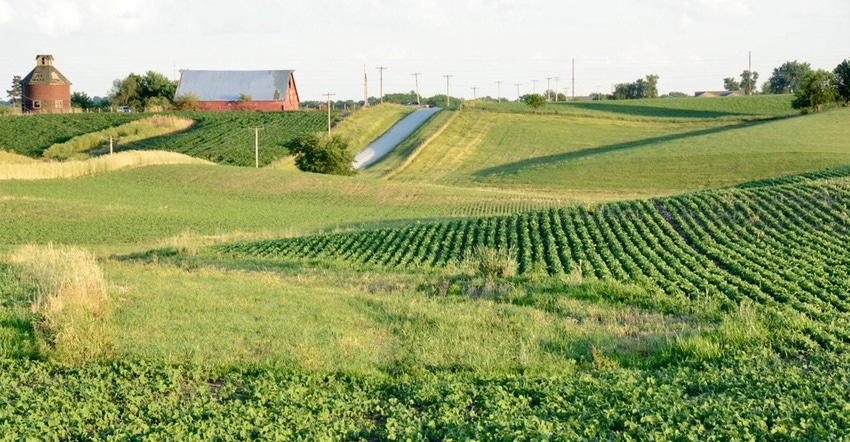October 12, 2017

Another farm season is about to wrap up, and even though we still have items to deal with for this year, we are looking forward to the next. Managing a farm operation, of any size, is not a simple task. Farm management scenarios run the gamut — from sole owner and operator of the farm with no other employees outside of the family, to absentee landowners with farm managers and tenants, to corporate ownership with multiple employees, and everything in between. Most of the farm management scenarios I see involve some kind of lease or contractual agreement.
Sometimes it’s hard to tell where, or even if, conservation fits into the farm management plan. Obviously, I think considerations of how the land is farmed should be right up there with what the farm is producing and how the work is to be done. These kinds of documents can help spell out who makes the decisions that dictate whether or not effective conservation can be implemented on the farm. From what I have seen, the conservation conversation frequently does not get the attention it deserves in these agreements. Having these issues addressed upfront not only can improve the farm’s bottom line, but also can help avoid conflict.
Here are a few items I think can be helpful in addressing the conservation aspect of farm management.
1. Prioritize. First and foremost, whether you are the landowner, land manager or tenant, make conservation a priority in your farm agreement. Conservation is not a short-term goal. There are some practices that can provide immediate benefits, such as a grade stabilization structure that stops the formation of a gully head. But many practices, such as those that focus on building soil health or fertility, take time. Consider agreement options where you can have long-term relationships.
2. Practice. Some conservation practices take land out of production. Maybe it’s just a small amount of land associated with a grassed waterway or a vegetated buffer, but those acres can add up. Just make sure you are together on how those acres will be treated in the farming arrangement. Include plans for both existing practices and any new practices that might be installed during the agreement period.
3. Commit. Along that same vein, there aren’t many conservation practices that have a “set it and forget it” mode. Most practices require some sort of management and maintenance, so those expectations should be spelled out and agreed upon.
4. Compensate. Ultimately, farm management agreements deal with compensation. I wish I could say that everyone agrees conservation is necessary, so we’ll all just step up and it will work out fine. It doesn’t usually work that way. There really does need to be a clear understanding of who will bear the cost to implement conservation practices.
Typically, agreements I’ve seen have the landowner foot the bill for structural practices, but as I mentioned earlier, there needs to be some consideration for the maintenance of these practices. Implementing a structural practice is usually pretty straightforward as far as costs, but vegetative and cultural practices might be a little more complicated because the work can often be accomplished without specialized equipment.
5. Pay. You should also think about who gets the incentive payment if land is in a conservation program. Our Environmental Quality Incentives Program provides funds for structural, vegetative and cultural practices. It accounts for complications and allows you to divide payments among owners and operators. The Conservation Stewardship Program focuses mostly on cultural practices and is set up for payments to go to farm operators. If you are the operator of the farm, I think it’s important to let the owners know you are in the program and that payments support your active stewardship, which ultimately benefits the land.
I know when we talk about finances and contracts it can be uncomfortable. My broad brush of the situation doesn’t cover all of the issues or do justice to the complexity of decisions that need to be made. But I believe it is important to lay out a path for responsible land management. I hope this reminder helps get the conservation conversation started in a positive way.
Dozier is the Illinois state conservationist. Direct comments or questions to [email protected].
About the Author(s)
You May Also Like




